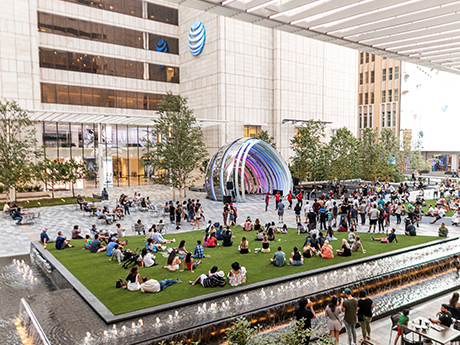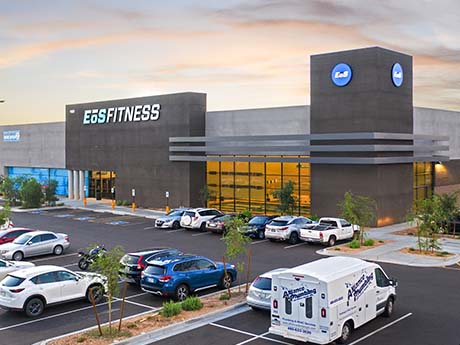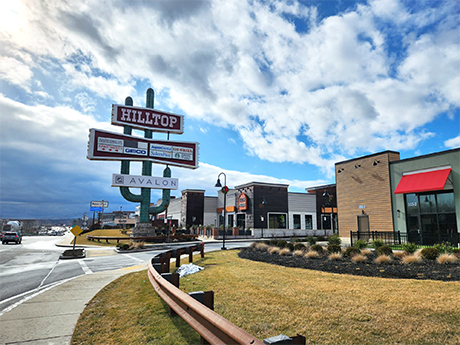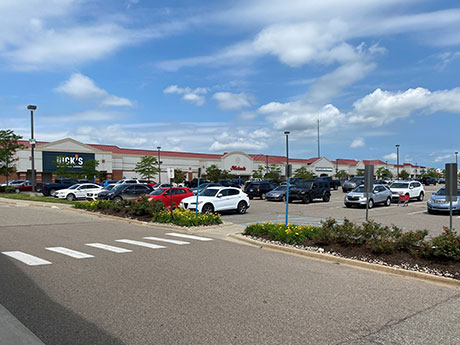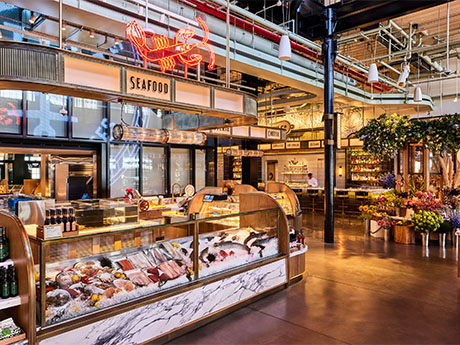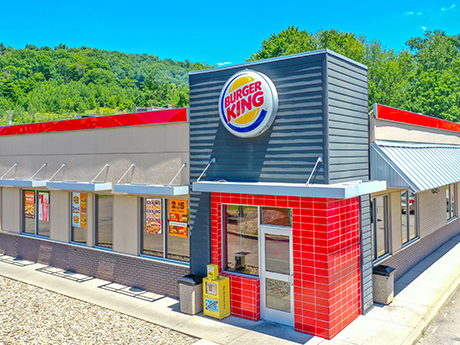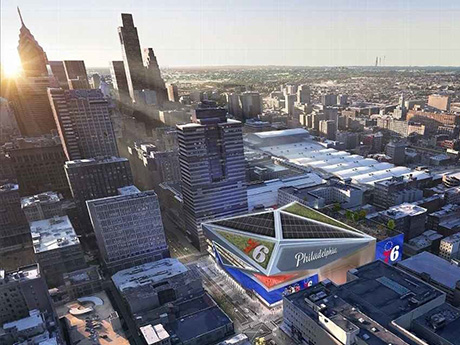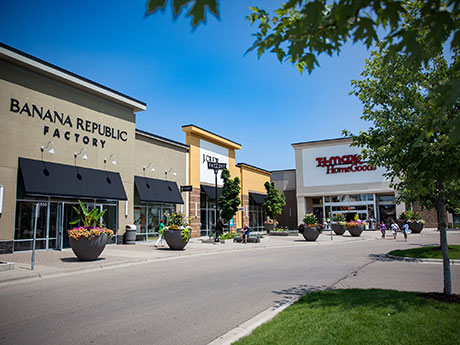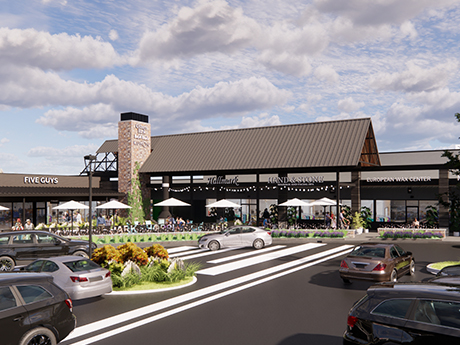By Barry Hand, principal, Gensler In a recent tour of a name-brand corporate campus, the host carefully explained to our team that his company’s policy regarding working from home (WFH) and returning to the office (RTO) remained loose as they completed a “year of learning.” This “learning” presumably involved listening to staff, observing who badges in when and where, experimenting with what works and what doesn’t and resolving the best way to get their arms around the most effective policies. This explanation has surely been given repeatedly in recent years. It appears most companies prefer to bring their people back to the office, but they also want to adopt policies that will work best for employees and customers, as well as the future of their organizations. While there are outliers that have instituted clear return-to-office directives, most firms are adopting change management strategies organized around attracting staff back to the office. They are doing this by leaning on experiences and amenities that demonstrate to employees the benefits of being present in the office. It seems the “experience” around which retail and food-and-beverage establishments are designed has now also reached into the corporate world. The Amenitized Workplace Increasing numbers of …
Retail
By Jason Baker, principal at Baker Katz When a national retail or restaurant brand acquires another prominent national name, the move might initially seem to make a great deal of sense — especially when there are clear similarities between the two brands. Ultimately, however, what makes these high-profile transactions successful may turn out to be less about brand synergy and more about market dynamics and commercial real estate leverage. Accepting that premise in turn raises some interesting questions about the role that these types of acquisitions and brand conversions might play in an increasing competitive commercial real estate landscape. Those questions are especially relevant in places like Texas, where retailers looking to expand or move into new markets may view the acquisition and conversion of struggling retail brands as a viable strategy. From fitness concepts to coffee chains, there may be opportunities retailers can leverage to find quality retail spaces in otherwise occupied marketplaces. Some of these acquisitions have already taken place. However, questions remain about how much of a role these conversions may play in Texas markets. The phenomenon is hardly a new one, but it does seem like a noteworthy trend for industry analysts, retailers and brokers alike …
BASTROP, TEXAS — Atlanta-based multifamily developer Wood Partners has acquired 26 acres in Bastrop, about 30 miles east of Austin, for the construction of a 650-unit project. The site is located within a larger mixed-use development by Houston-based Pearl River Cos. John Baird, Michael Kennedy and Sullivan Johnston of Avison Young represented Pearl River Cos. in the disposition of the land. Wood Partners plans to break ground in the coming weeks and expects for construction to last 24 to 36 months. Information on floor plans and amenities was not disclosed.
By Ben Starr, partner at Atlantic Retail As the retail real estate industry seeks to understand what may lie ahead in 2023, a study of the wild ride it took in 2022 will likely produce the best clues. As early as March of last year, it was clear that 2022 would be a year of activity like none of the prior 15. While headlines through the spring and summer emphasized a run-up in consumer prices and a recession hovering on the back of interest rate hikes, users of retail space intensified their pursuits of new opportunities, unbowed by the looming economic clouds. Everyone — traditional commodity retailers, direct-to-consumer concepts, restaurants, fitness users, medical and other services — was chasing deals. Whether small or large or in primary, secondary or tertiary markets, activity heated up with each new month. Reflecting Larger Trends With its dense middle-class demographics, close proximity to Boston and high traffic counts, Saugus has historically been in high demand among category killers as well as high-profile service and restaurant operators. Though its local mall, Square One, has struggled as larger, more regional malls rose in upscale neighboring markets, the heavily traveled Route 1 corridor has remained one of …
By Evan Lyons, Encore Real Estate Investment Services Looking back on 2022, it could be said that Detroit’s economic performance last year mirrored that of the city’s tenacious Detroit Lions’ football season. Both were mired in doubt, plagued by volatility and sustained by grit, yet beyond all expectation, when the clock ran down, both proved the naysayers wrong. Just as the Lions surprised doubters by finishing their season at 9-8 and beating their divisional rivals, the Green Bay Packers, Detroit surpassed expectations by outpacing the national jobs growth rate of 5.8 percent at mid-year 2022 with a rate of 8.6 percent year-over-year. Gains in employment and wages are expected to continue over the next few years, according to a University of Michigan study. The city bolstered its “offensive line” with new store openings and new construction throughout the urban core. Stadiums and parks were filled again, fueled by crowd-pleasing events and programing, including Belle Isle parks’ notorious, over-waxed giant slide, which went viral and gained infamy last year for catapulting riders who dared venture a ride. Detroit also scored points in visits to leisure and hospitality establishments during the past 12 months. Visits increased by 50 percent from June …
By Taylor Williams The New York City retail market is currently functioning like an episode of The Price Is Right. Developers, investors, brokers and operators are all trying to attach fair values to rents and sales prices for spaces of all sizes and submarkets. But after a tumultuous period marked by a global pandemic and record inflation, followed by a string of severe interest rate hikes, accurately assigning those numbers is easier said than done — at least in some submarkets. According to data from JLL, at the end of the third quarter, the average rent throughout New York City was $290 per square foot, down 5.3 percent year over year. That figure represents an improvement from the second quarter of 2022, when rents posted a 12 percent decline on a year-over-year basis. In addition, JLL’s data shows that 58 new leases were signed in the third quarter. While that figure marks a decline of 13 percent from the second quarter, it also constitutes an increase of 7.4 percent on a year-over-year basis. These numbers suggest that after retail leasing and sales completely stagnated in 2020 due to an unprecedented public health crisis, the market corrected sharply in 2021 and …
By Tom Georges, investment sales broker, Northmarq The U.S. economy reported annualized growth of 2.6 percent in gross domestic product (GDP) in the third quarter, thereby avoiding a third consecutive quarter of negative growth. This positive news can be easily tempered by the fact that the growth was greatly affected by trade and inventory numbers, which were skewed as a result of world events like the war in Ukraine. But the news of growth was welcomed in an economy that has been starved for something positive for most of the year. Compounding the economic caution in the absence of sustained economic growth, of course, is the strain that inflation has inflicted on all Americans. In response to 40-year inflationary highs, the Federal Reserve has been forced to react with its primary inflation-countering tool: increasing interest rates. In early November, the Fed raised short-term rates to their highest level since January 2008. Additional rate hikes are anticipated in December, although signals suggest we’ll see increases in smaller increments going forward. Still, amid all the turmoil and uncertainty, several quick service restaurant (QSR) operators continue to roll out expansion plans and report better-than-expected sales and earnings. Restaurant Brands International (NYSE: QSR) recently …
By Taylor Williams Though very much in its infancy, the Philadelphia 76ers’ recent decision to assemble a development team and file a formal proposal for a new arena at the current site of Fashion District Philadelphia has drawn the city’s retail market into speculation on how buildings, operators and streetscapes will be impacted. Known as 76 Place, the $1.3 billion venue would theoretically anchor the Market East corridor that connects Center City to Chinatown and Old City via its location atop the city’s largest public transit hub. The ability to centralize the arrival of fans, shoppers and diners from all cardinal directions, as well as multiple states, automatically sparks excitement for growth opportunities in the world of retail real estate. This project would immediately check that box. “The announcement of the new 76ers arena has generated a lot of discussion in the retail world,” says Steve Gartner, executive vice president at CBRE. “Bringing an arena to downtown Center City, especially one that’s adjacent to a convention center, will allow Philadelphia to hold more concerts and global events, like political conventions, that impact retailers and restaurants. These positive impacts will permeate the fabric of all of downtown.” “The retail community is …
By Jesseka Doherty and Johnny Reimann, Mid-America Real Estate The fundamental strength of the metro Minneapolis economy is on full display in the suburban retail real estate market this summer, where space is tight, new supply is limited, rents are on the rise and construction costs continue to challenge tenants and landlords alike. The macroeconomic picture in the first half of the year was stunning, actually. For the second quarter that ended June 30, the unemployment rate was a remarkable sub-2 percent, which was even lower than the national level of about 4 percent, and consumer spending was robust. Urban submarkets have been more challenged, but even in the Minneapolis central business district, retail rents are holding up as the office market shows stability. Driving demand With work-from-home still a factor, remote employees who live in the suburbs often are more inclined to shop, dine and play close to home, which bodes well for retail in proximity. Across key trade areas, retailers and other tenants in regional and community centers are more in demand than ever. Submarkets faring well include Apple Valley, Burnsville, Coon Rapids, Eagan, Maple Grove, Roseville and Woodbury. The densification of the suburbs also is driving demand …
By Kari Glinski, vice president of asset management, Federal Realty Investment Trust Philadelphia is known for many things, from being the City of Brotherly Love to a city rich in history, art, culture and food. As a result, the region is desirable for many residents and visitors and has been recognized in real estate circles for its housing and retail development opportunities. Throughout the pandemic, greater Philadelphia has lent itself to commuters, residents, tourists and hybrid employers by providing convenient access to other East Coast cities, vast amenities and outdoor recreation spaces, as well as unique dining, entertainment and shopping experiences. Recognizing the need to continue catering to the remote employees, shopping center owners and developers see ample opportunity across the region, specifically within the inner suburbs. In these locations, there is a great mix of diversity, mature employment bases and irreplaceable real estate where developers can continually create long-term value through blended opportunities. Federal Realty has been reinvesting in the greater Philadelphia and Southern New Jersey region for the past decade, strategically transforming our portfolio. Our company focuses on the ownership, operation and redevelopment of high-quality, retail-focused properties, with a mission to deliver long-term, sustainable growth through investing in …


